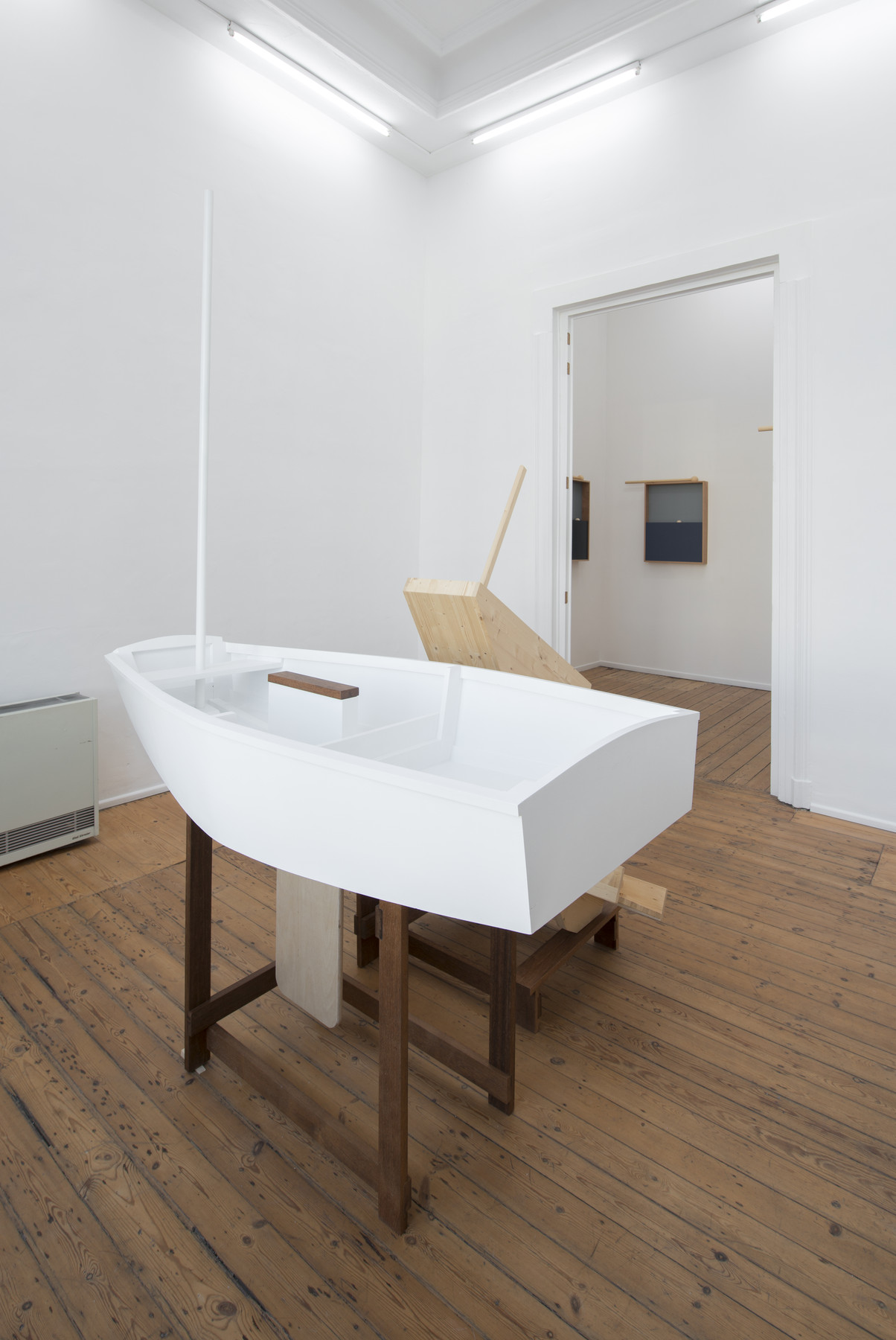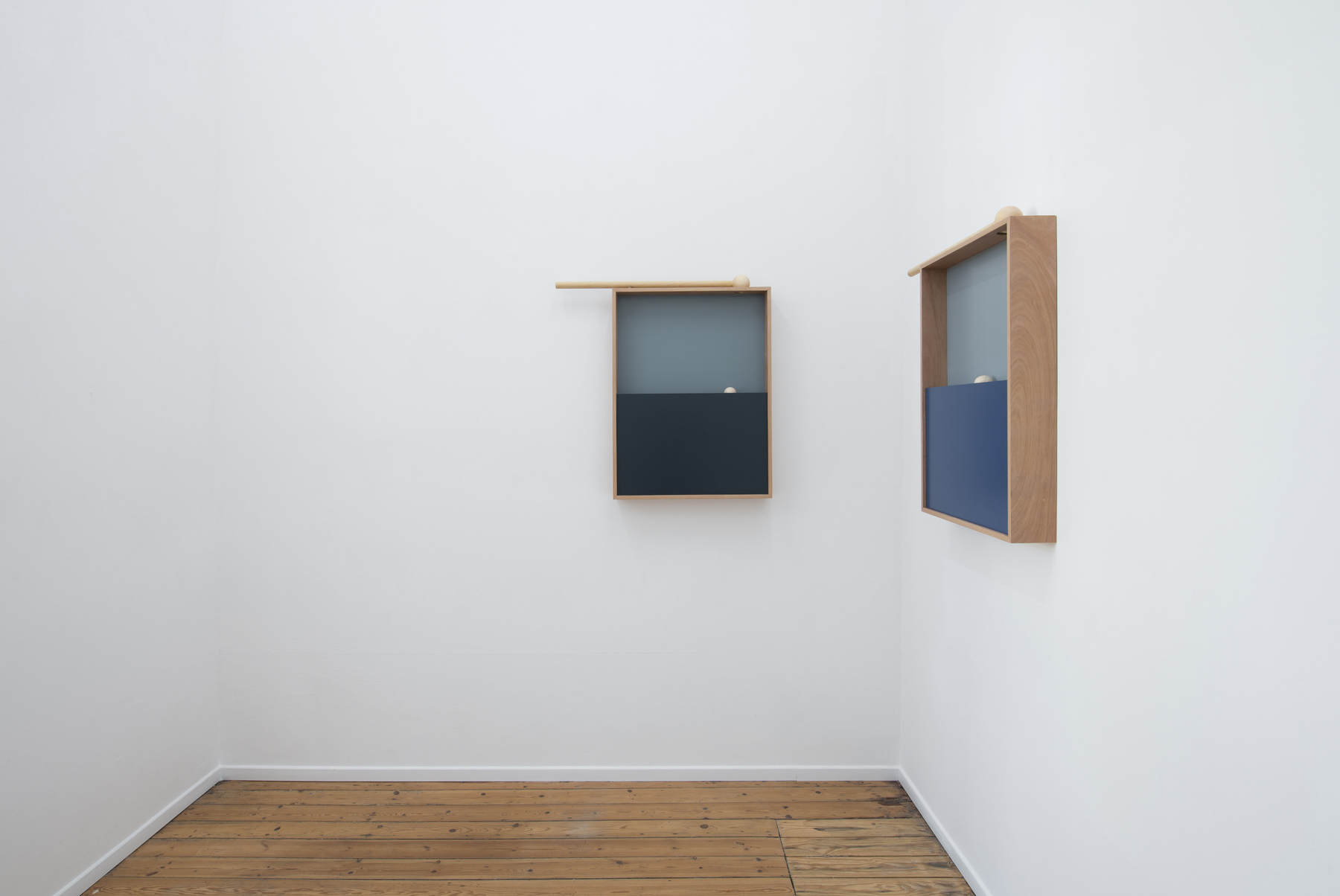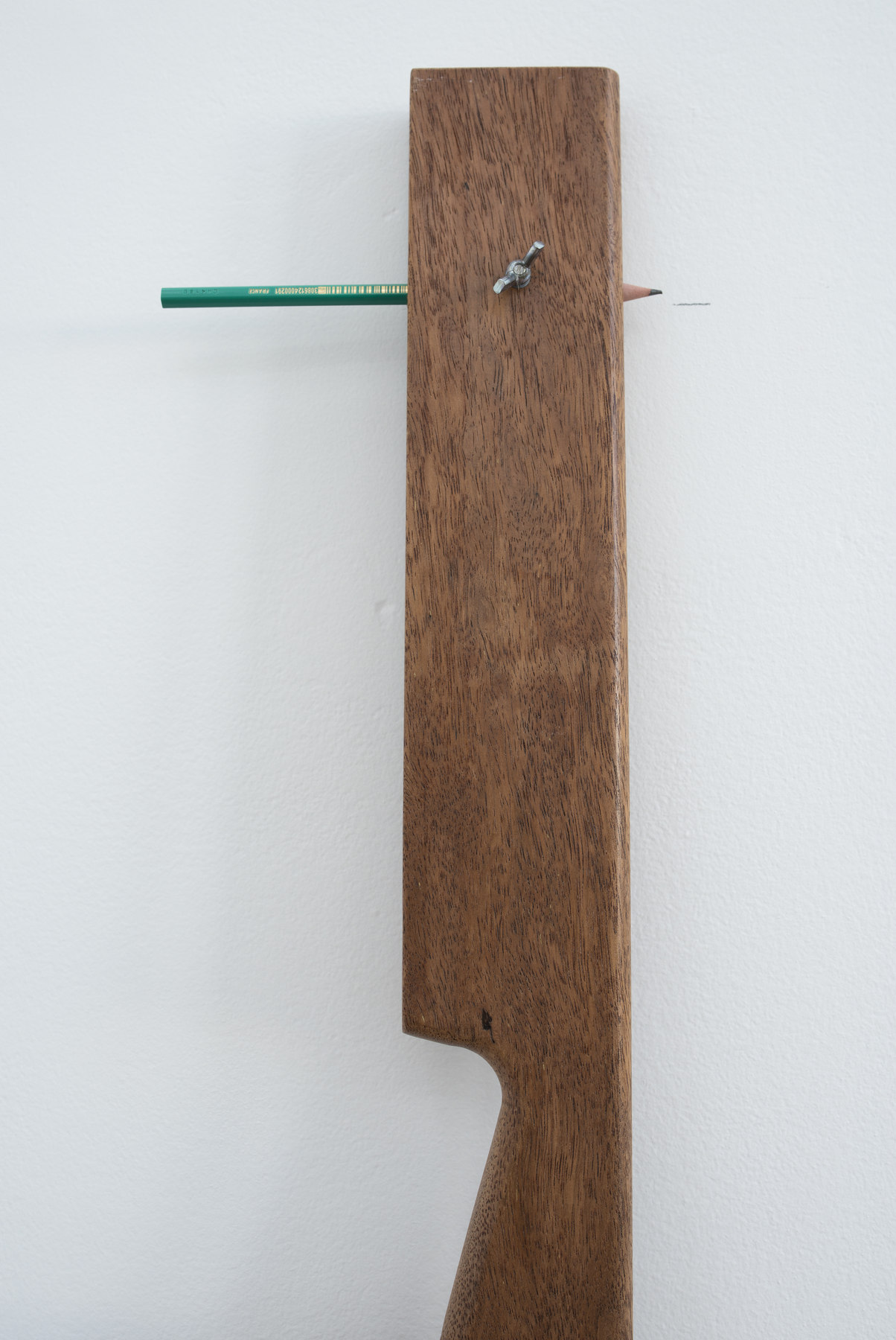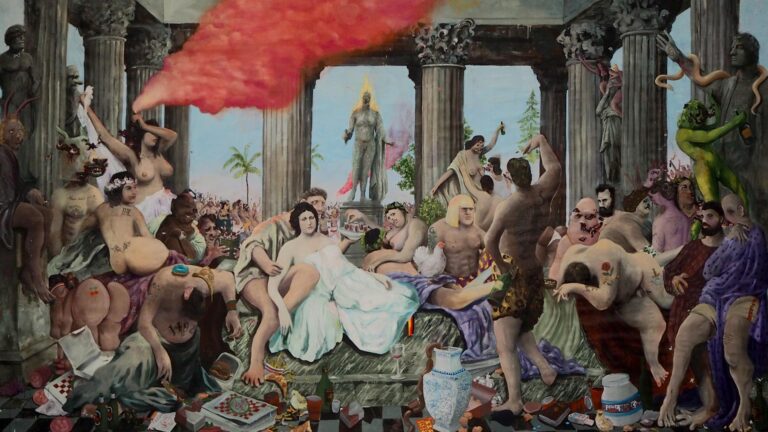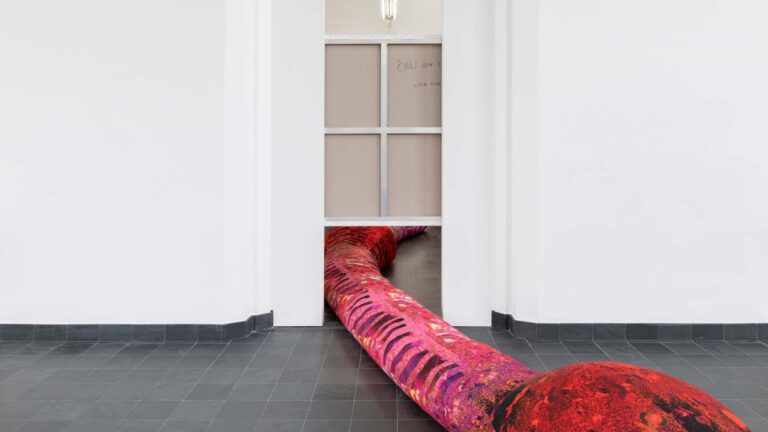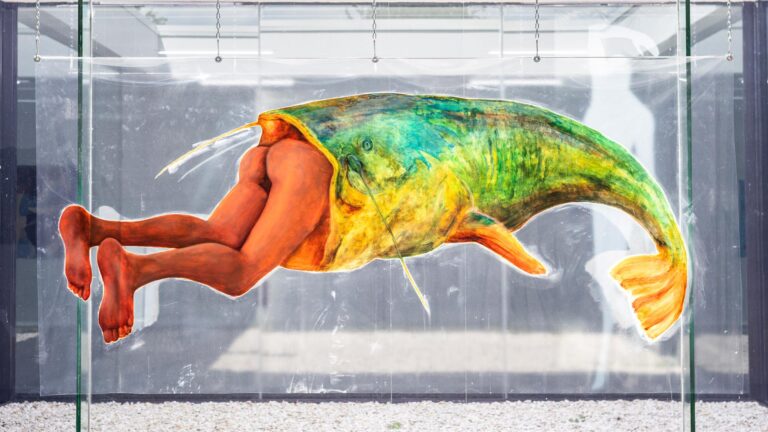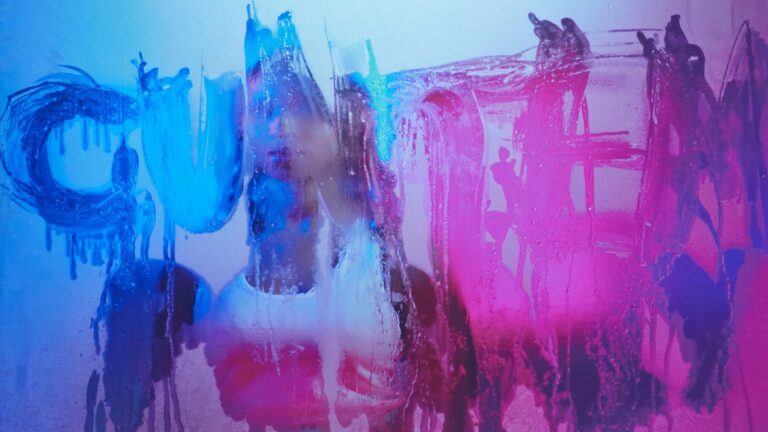Artist: Stefaan Dheedene
Exhibition title: Half an optimist, a brand new rocker box and a blow on broad daylight
Venue: trampoline, Antwerp, Belgium
Date: February 4 – 25, 2017
Photography: all images copyright and courtesy of the artist and trampoline
Imagine a visitor. Man or woman. Young or old. It does not matter. Imagine this curious visitor who does not want to listen to the story of the gallerist. Imagine that you were this visitor. In front of you, in the confined space of the gallery, various objects. The title of the exhibition helps you identify them.
The first is a reproduction on scale ½ of an optimist, a small one-person sailboat conceived in 1947 to promote sailing for children. You learn by several online articles about the optimist that the boat was made from an admiration of soapbox races and in order to prevent youth delinquency. Frequent sailing was a remedy against doing nothing. Those same articles inform you also about the fact that the American Clark Mills made up the plans as such that they could be built by one person with plywood plates. Already from the construction of the optimist the concept of autonomy was manifestly present and total. You get impressed by the scale of the boat. It is a scale model but at the same time it is big enough for an adult.
Not much later, Wikipedia also learns you that the imposing object in varnished wood next to the optimist is the ‘brand new rocker box’. Here as well, it concerns a brand new object with a simple architecture. It is similar to the rocker boxes built by thousands of gold diggers in the 19th century to find gold in the rivers. Just like the optimist, it is standing on a plinth. The rocker box has a sieve that divided the gold particles from the sand and other impurities from the river. With the big wooden handle, one can shake it over its axe and move it like a swing. You associate the handle of the rocker box with those of old gamble machines in casinos.
In the second space you see a series of deep wooden boxes on the wall on which rests a sort of hammer. You succeed in deducing that this instrument makes sure that a ball can fall down with a bang through the hole at the top of the box. At the moment this ball lies in the middle of the composition where the two color surfaces meet. Once again the title helps you understanding the nature of the works. It might be seascapes, despite the vertical format which is unusual in this genre. A short film made in the studio of the artist and later posted on Instagram, makes you understand that these artworks are probably based on children’s toys. You think about traditional games like the shuffleboard or hammer tap tap. The bang of the ball can symbolize cosmic Apocalypse with as a result a still image of a sunset or sunrise.
While you lean against the window pane of the gallery, you question the vicinity of the works in the two gallery spaces. You have another look at the invitation. You now have a better understanding of the choice of the color gold and of the exhibition title. This is almost comical, just like the beginning of one of those funny stories in which the characters are all on a boat and only one will remain. You nevertheless do not understand which role the wooden bar with the screw and pencil play in this story. You hear the gallerist explaining to another visitor that the pencil is mounted on nose height of the artist and that it has determined the centerline of the wooden crates.
Even if all works have a firm physical autonomy, they seem to be strongly linked to one another in their detailed execution and carefully finish. Every work is in essence a wooden box. You appreciate the wood as a humble material. The optimist and the rocker box function as an antithesis of industrial ready-mades. All of sudden it seems as if the exhibition reflects upon very diverse themes related to today’s global socio-economic situation. You think about the power of the individual translating this complex surrounding world in the construction of simple devices.
And what seemed at first sight to be a hybrid – minimalistic, conceptual – exhibition, becomes a political manifestation of things and activities. The works are objects that are able to maintain themselves outside the exhibition. When you walk out of the gallery, you get overwhelmed by the power of the metaphorical thoughts, when you read the quote of Clark Mills out loud: “It all happens under the waterline. If you haven’t got it done there, it doesn’t much matter what you do to the topside”.
-Simon Delobel, February 2017

